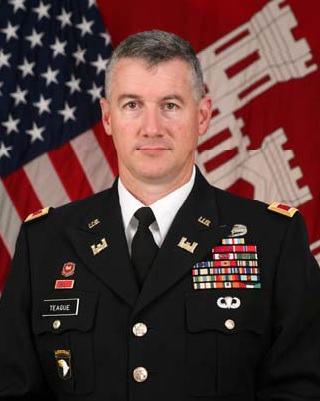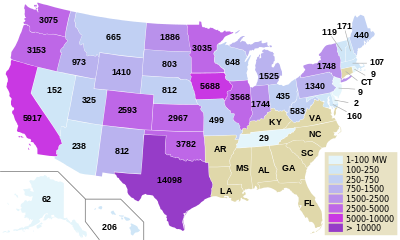The United States technological revolution has made rock stars out of flashy, emerging new plays like the Bakken, Niobrara and Utica. And everybody wants to get in on the next hot area.
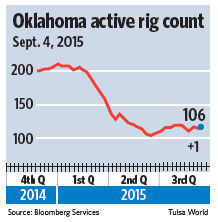 Oklahoma, on the other hand, is old school. It’s a model of consistency when it comes to United States energy development. The Sooner State has always been among the top energy producing states, ranking fifth overall in 2013 (according to the Energy Information Administration) and outpacing highly regarded players like Colorado, Louisiana and North Dakota. Its dependable and rewarding basins like the Anadarko, Arkoma and Ardmore have withstood plunging rig counts better than their peers, losing about half of their rigs while other plays in North America have reduced operations by 65% or more.
Oklahoma, on the other hand, is old school. It’s a model of consistency when it comes to United States energy development. The Sooner State has always been among the top energy producing states, ranking fifth overall in 2013 (according to the Energy Information Administration) and outpacing highly regarded players like Colorado, Louisiana and North Dakota. Its dependable and rewarding basins like the Anadarko, Arkoma and Ardmore have withstood plunging rig counts better than their peers, losing about half of their rigs while other plays in North America have reduced operations by 65% or more.
But like the evolving energy industry, Oklahoma is taking initiative among renewable energy and alternative fuels, including a compressed natural gas (CNG) movement that is among the most expansive in the country.
 Directing Oklahoma’s energy programs is Michael Teague, the state’s Secretary of Energy and Environment. Mr. Teague, a United States Army veteran of nearly 30 years, is the first person to serve at the position. His duties prior to being named Secretary of Energy and Environment included serving as the commander of the Tulsa District of the U.S. Army Corps of Engineers. Oklahoma Governor Mary Fallin appointed Teague to his new position in 2013.
Directing Oklahoma’s energy programs is Michael Teague, the state’s Secretary of Energy and Environment. Mr. Teague, a United States Army veteran of nearly 30 years, is the first person to serve at the position. His duties prior to being named Secretary of Energy and Environment included serving as the commander of the Tulsa District of the U.S. Army Corps of Engineers. Oklahoma Governor Mary Fallin appointed Teague to his new position in 2013.
Michael Teague spoke with Oil & Gas 360® about Oklahoma’s energy initiatives and national energy issues in this exclusive interview.
OAG360: Mr. Teague, could you give us some background on the U.S. Army Corps of Engineers and how your experience with that organization translated into your most recent position?
TEAGUE: The Army Corps of Engineers, as an organization, does military construction for both the Army and the Air Force. They do all the installations, including a civil works program, and manages flight control missions. It also does navigation on the river systems, like the Mississippi and the Arkansas River up through Oklahoma.
The core issue is all the 404 permits under the Clean Water Act for any dredge and fill. So I worked with the district commander in Tulsa for three years and coordinated primarily with the environmental agencies of the state. So it gave me a good feel for all of the different issues across the state that had environmental impacts. It also gave me a good feel for working with the other state agencies. I’m with the Department of Environmental Quality, the Water Board, the Department of Wildlife, but also with Tourism and Recreation, just for all for the state parks on Corps lakes. That was my background in the district.
But two years ago, Governor Mary Fallin decided to combine the energy and environment cabinets in Oklahoma. There’s not a single energy issue in Oklahoma that doesn’t have an environmental component to it. And there’s not a single environmental issue in Oklahoma that does not in some way impact both the energy industry and our electrical power generation.
OAG360: Are there other states that have an energy and environment setup similar to Oklahoma?
TEAGUE: Today, there are about a dozen or so. It started in the northeast – Massachusetts and Connecticut were a couple of the first states, Kentucky has now combined. More and more you’re finding them. The Clean Power Plan is another example of that. It’s an environmental regulation but it impacts public utilities and so it really is both energy and environment. We’re seeing more and more states that are doing it.
OAG360: Does that raise concern from environmental and energy groups, depending on who is assigned to what position? Does that lead to a lot of pushback when certain officials are elected?
TEAGUE: In Oklahoma, I believe there was some concern from the environmental side when the Governor made the decision to combine the two. There were some other folks with individual concerns that I did not have an oil and gas background. But, to be very honest, those all went away pretty quickly.
We made a concerted effort to get out and meet with everybody. We visited drill rigs, met with the companies and had them show us what they do. We went out to the Phillips 66 refinery in Ponca City and talked about water, which obviously has a huge impact throughout the industry and throughout the state. Water is my background. So there were some concerns at the very beginning, but I believe it was more concerns of being an unknown, and we’ve taken care of that very quickly.
OAG360: Has that streamlined the process in how the Cabinet is reviewing the reported earthquakes?
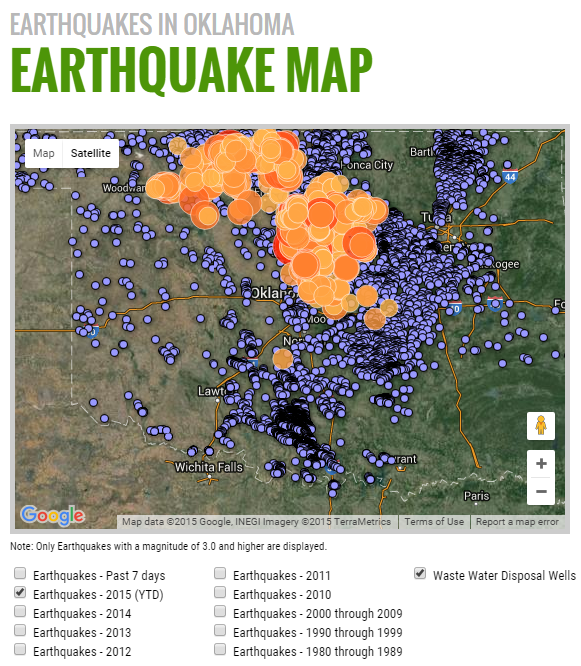 TEAGUE: A key piece to note is that I am the Cabinet Secretary. I am not a regulator, either on the oil and gas, public utilities or on the environmental side. But what we do is, we bring all of those regulators together with the stakeholders, almost regardless of the topic.
TEAGUE: A key piece to note is that I am the Cabinet Secretary. I am not a regulator, either on the oil and gas, public utilities or on the environmental side. But what we do is, we bring all of those regulators together with the stakeholders, almost regardless of the topic.
But earthquakes have been the biggest topic lately. It’s been consuming most of our time right now as we bring everybody together on how we are going to address this issue.
OAG360: Have any restrictions been enforced yet? What’s your next step in addressing that?
TEAGUE: The Governor announced a Coordinating Council on seismicity last September and put us in charge of it. So for Oklahoma, we bring in our regulating agencies, so it’s a Corporation Commission for oil and gas. It includes the research folks like the state geologic survey along with the industry trade associations. The industry needs to be part of the solution on this and they’ve been great partners. You can imagine who has all the 3-D subsurface seismic data for Oklahoma. The industry has been providing that data back to the geologic survey which has been really helpful.
We also have the Ground Water Protection Council (GWPC) – a nongovernmental organization that’s actually based here in Oklahoma City. They were the impetus behind Frac Focus and presenting that database not just for the industry but for public access as well. We’ve made a point to include our three big universities (University of Oklahoma, Oklahoma State and Tulsa). Those universities really give us the reach out to the rest of the national academic community that are all studying Oklahoma earthquakes right now.
At this point, the seismologists, have come to the conclusion that these earthquakes really are related to disposal wells. Nobody is really sure of the exact aspect, whether it be volume, rates, location, or depth. It’s probably a combination of several of those things.
Primarily the earthquakes have been in north-central Oklahoma, so our Corporation Commission has put out directives to prove the depth of your wells and ensure you’re not in contact with the basement. That was a recommendation from our seismologist. There is one small area where, even after we prove the depth, we continue to have a swarm of earthquakes. It’s a fairly small area but we reduced volumes on the disposal wells in that patch.
Kansas, on the other hand, has a different approach. Kansas reduced volumes by 50% in the two counties where they were seeing the most earthquakes. All the states are kind of wrestling with this problem right now and we’re all working together on it. If what Kansas is doing works, we’re going to follow. If what we’re doing works, Kansas is going to follow. Arkansas, Texas, Colorado and Ohio are the other states that are seeing similar problems. The Ground Water Protection Council and the Interstate Oil and Gas Compact Commission, as part of a joint effort, will issue a report the last week of this month on induced seismicity.
OAG360: Shifting gears a bit, what kind of benefits has Oklahoma realized from the southern leg of the Keystone Pipeline, and how would it be further impacted if the northern leg is ever approved?
 TEAGUE: Obviously Cushing is a huge hub, not just for Oklahoma but on a national scale. Having that portion from Cushing down to the Gulf really allows the production from Oklahoma, southern Kansas and others in this area to get the oil moved down to market.
TEAGUE: Obviously Cushing is a huge hub, not just for Oklahoma but on a national scale. Having that portion from Cushing down to the Gulf really allows the production from Oklahoma, southern Kansas and others in this area to get the oil moved down to market.
To me, the advantages of the northern leg include both economics and safety components. I personally would much rather see oil move through a modern, monitored pipeline system than by rail or truck. Not only is it more efficient, I think it’s safer for the environment. The technology of those pipelines, such as the monitoring and checks that are built into the system, are really incredible. So I think the big benefit of the northern leg is as much safety – public and environment – as it is economic.
OAG360: Generally speaking, does Oklahoma overwhelmingly approve the Keystone XL?
TEAGUE: Absolutely. As a matter of fact, I mentioned the Corps of Engineers regulates the 404 permits that relate to the Clean Water Act impacts on any streams or rivers. I was actually the district commander who signed the 404 permit for Tulsa, and we were promptly sued by the Sierra Club.
OAG360: On the renewable side, Oklahoma recently ended the exemption on property taxes for wind developers. Do you believe any further exemptions may be necessary in the future? What are some ways Oklahoma can do to encourage additional energy investment?
TEAGUE: The reason we changed the incentive last year is because those incentives had done exactly what we wanted. They took a very small wind energy sector and created a substantial piece of the power generation in our state. They worked exactly like they were supposed to and we couldn’t afford them anymore.
We have two incentives for wind: one is the property tax, and the other is a zero emissions production tax. The federal production tax is 2.3 cents, ours is 0.5 cents per kilowatt. In 2013, the state wrote a check of $24 million to zero emissions production and $32 million to the property tax. So we, quite frankly, reached a point where we couldn’t afford that level of incentives. The industry itself didn’t need it anymore, but we made sure that the property tax changes didn’t affect any projects under development. We made sure everybody knew what was coming so we weren’t pulling a rug out on anybody.
So to your question: Do I see new incentives on the horizon? In Oklahoma, I do not.
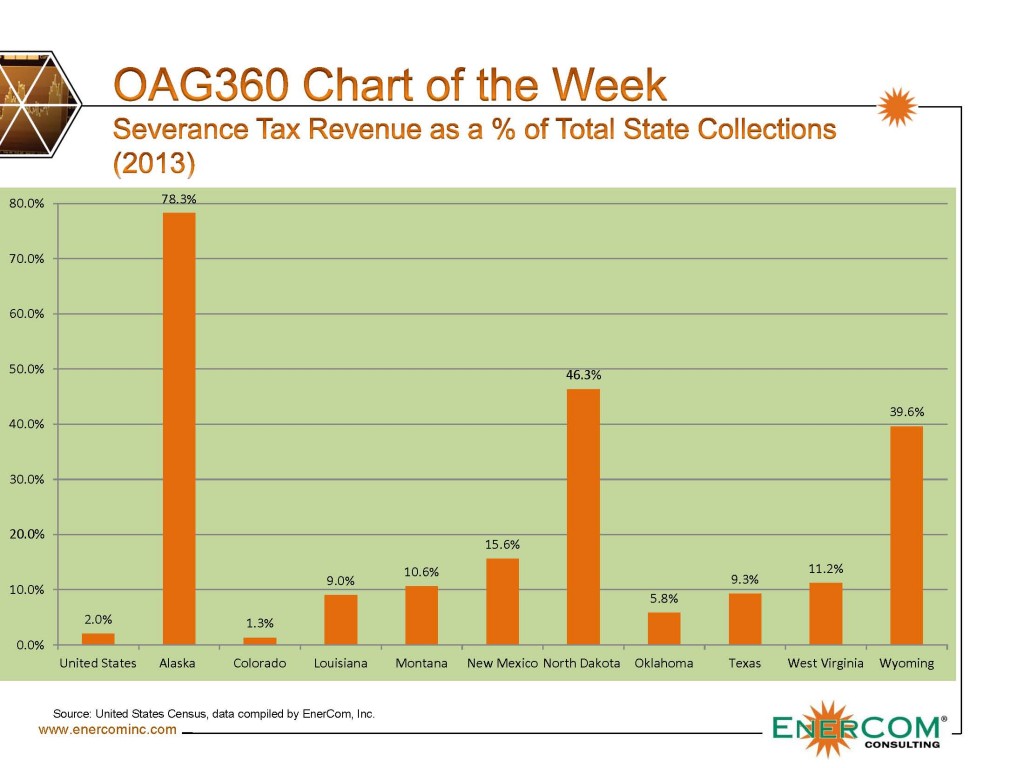 The reason is because of the overall state budget situation. We’re a much more diverse economy in our state than we were in the 1980s. Oil and gas is clearly still a huge piece, the biggest piece of our state economy. But we’re seeing effects on our state revenue from the reduction in production driven by the price of oil, so I don’t know if I see any new incentives on the horizon for that.
The reason is because of the overall state budget situation. We’re a much more diverse economy in our state than we were in the 1980s. Oil and gas is clearly still a huge piece, the biggest piece of our state economy. But we’re seeing effects on our state revenue from the reduction in production driven by the price of oil, so I don’t know if I see any new incentives on the horizon for that.
OAG360: Did you take any cues from Texas regarding the wind program, considering they are the top wind energy producer in the country?
TEAGUE: We actually looked around at some states, including Texas and Kansas, to check out their incentives. We wanted to make sure we were going to be very competitive in our region, and we’re still very competitive across that region. The difference in Texas is just scale. I mean the state is so big, they have the same wind resources, they just have two or three times as many acres as we do to go out there and put turbines on.
But we’re #4 in the nation for wind production. So last year we got about 15% of our power from wind projects, and that will probably move close to 18% this year. It’s a big deal as part of a portion of our power generation and it needs to continue that way. But we need to have complementary resources when the wind doesn’t blow, and we think that ought to be natural gas. Oklahoma is #4 in the nation for natural gas, and we want to use Oklahoma’s resources to make sure we are powering our communities.
OAG360: That leads to a question about Oklahoma’s CNG initiative. What has your state done on that front and what are the next steps?
TEAGUE: So we have tax incentives on CNG, both at the vehicle and infrastructure levels, and we will continue those. It’s been incredibly successful – it really started with Governor Fallon directing the state fleet to move to natural gas vehicles, including the Oklahoma Department of Transportation and all of their trucks that are running around the turnpikes. Governor Hickenlooper in Colorado partnered with Governor Fallin on the CNG initiative.
But it’s been a huge piece of both generating the demand out here and helping the private side put in the infrastructure and the fueling stations. So we are pretty well covered across the state. And also we should talk about what we do differently in the future. Gasoline right now is a $1.88 in Oklahoma City and CNG is at $1.69, so the return on investment right now is certainly a lot longer than what it was when gasoline was $3.25, for example.
OAG360: What do you think has the worst long term repercussions right now, both possibly nationally and for Oklahoma, whether it’s the absence of Keystone, the crude export ban or the EPA regulations? Are any of those more damaging than the other?
TEAGUE: I think the export ban is the most damaging right now. Like I said, if you don’t have the Keystone XL pipeline, folks are still going to move that crude, it’s just not going to be as efficient economically, and as safe, both public and environmentally. But that oil will still move.
The export ban is a big deal. I’m disappointed that the president said he won’t approve lifting the ban, that’s actually something we thought they’d sense nationally and we believed there was going to be some assistance at the federal level. It’s absolutely an artificial barrier and there’s no reason for it. You can argue whether there was a reason for it 40-something years ago, but there’s not a reason for it right now.
We need to let the market operate the way it’s designed. The U.S. in that market right now, but we’re in that market with one hand tied behind our back.
OAG360: Thank you very much for your time.
Important disclosures: The information provided herein is believed to be reliable; however, EnerCom, Inc. makes no representation or warranty as to its completeness or accuracy. EnerCom’s conclusions are based upon information gathered from sources deemed to be reliable. This note is not intended as an offer or solicitation for the purchase or sale of any security or financial instrument of any company mentioned in this note. This note was prepared for general circulation and does not provide investment recommendations specific to individual investors. All readers of the note must make their own investment decisions based upon their specific investment objectives and financial situation utilizing their own financial advisors as they deem necessary. Investors should consider a company’s entire financial and operational structure in making any investment decisions. Past performance of any company discussed in this note should not be taken as an indication or guarantee of future results. EnerCom is a multi-disciplined management consulting services firm that regularly intends to seek business, or currently may be undertaking business, with companies covered on Oil & Gas 360®, and thereby seeks to receive compensation from these companies for its services. In addition, EnerCom, or its principals or employees, may have an economic interest in any of these companies. As a result, readers of EnerCom’s Oil & Gas 360® should be aware that the firm may have a conflict of interest that could affect the objectivity of this note. The company or companies covered in this note did not review the note prior to publication. EnerCom, or its principals or employees, may have an economic interest in any of the companies covered in this report or on Oil & Gas 360®. As a result, readers of EnerCom’s reports or Oil & Gas 360® should be aware that the firm may have a conflict of interest that could affect the objectivity of this report.

